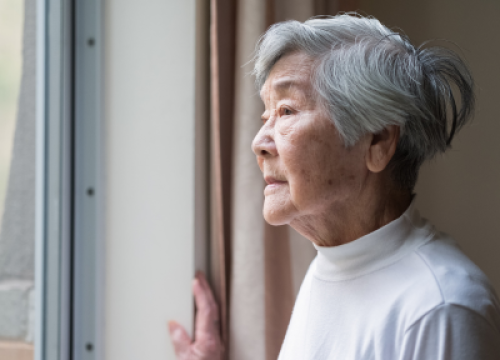Anxiety
💡 Quick Summary
-
Anxiety is a common, treatable non-movement symptom of Parkinson’s disease.
-
Can appear before or after diagnosis and is linked to the same brain chemistry changes (dopamine, serotonin, GABA) that cause movement symptoms.
-
It may be triggered by “off” medication periods, isolation or the stress of managing PD, and can cause physical and emotional symptoms such as racing thoughts, panic, irritability and sleep problems.
-
Treatment often combines medication adjustments, therapy, mindfulness, exercise, and social support.

Anxiety is a common but often overlooked symptom in Parkinson’s disease (PD). While PD is most often associated with movement problems, research shows that non-movement symptoms like anxiety can significantly impact overall well-being. Fortunately, there are proven strategies, including medication adjustments, therapy, mindfulness practices and exercise, that can help manage anxiety and improve quality of life.
Anxiety is more than a reaction to the stress of living with a chronic condition, it is connected to the same brain changes that cause movement symptoms such as tremor and stiffness, and it is a treatable part of PD.
Understanding Anxiety in Parkinson’s
For some people with PD, anxiety can be one of the earliest signs — sometimes appearing years before a diagnosis. For others, it may start around the time they learn they have Parkinson's, often intertwined with the emotions of facing something new and uncertain. In some cases, anxiety doesn’t appear until later. It is also common for anxiety to occur alongside depression, as both are affected by changes in brain chemistry caused by PD.
There is no single cause for anxiety in Parkinson’s, but several factors can play a role:
-
Brain Changes — In PD, dopamine-producing cells are damaged and gradually die. Since dopamine is a brain chemical that helps regulate mood as well as movement, its loss can contribute to anxiety. PD also affects brain chemicals like GABA and serotonin, which are linked to anxiety and depression.
-
"Off" Periods — As PD medications wear off in between doses, movement symptoms often return or worsen. During these periods, some people may experience anxiety or other non-movement symptoms.
-
Coping with Parkinson’s — Life with PD means managing symptoms and facing many unknowns. Worrying about how symptoms might change during the day or over time can lead to anxiety.
-
Isolation — PD can make it more challenging to stay active or socially connected, which can lead to isolation and increase anxiety.
-
Other factors — Family history, health issues and everyday life stressors can also influence the development of anxiety.
of people with PD will experience some form of depression.
of people with Parkinson’s will experience an anxiety disorder.
Recognizing and Diagnosing Anxiety in Parkinson’s
Anxiety can take many forms, including ongoing worry, sudden panic, racing thoughts or a sense of impending doom or fear without any obvious trigger. It might make everyday tasks feel overwhelming and even cause physical symptoms like a pounding heart, sweating or shortness of breath.
Signs of anxiety include:
-
Ongoing worry or fear
-
Unwelcome, repetitive thoughts
-
Sudden feelings of panic or terror
-
Difficulty falling or staying asleep, often due to racing thoughts or worry
-
Avoiding situations because of fear
-
Irritability or restlessness
-
Feeling overly alert or constantly on guard
-
Racing heartbeat, dizziness or nausea
-
Excessive sweating
Feeling stressed or worried from time to time is normal, and might even seem like an unavoidable part of living with PD. But if these feelings become constant, intense or begin interfering with daily life, they could be a sign of anxiety.
To diagnose anxiety, your healthcare team will review your PD symptoms, along with any anxiety symptoms you are experiencing and how they are affecting your daily life. Your doctor may refer you to a mental health professional for further evaluation.
Managing Anxiety in Parkinson’s
Talking to your healthcare team is often the first step in managing anxiety. They can help identify triggers and recommend strategies. You do not have to face anxiety alone — it is treatable and often managed with a combination of approaches, such as:
Tips for Living with Anxiety
Addressing anxiety can help you live better with Parkinson's. Like other PD symptoms, each person experiences anxiety and responds to treatments differently. These strategies can help:
-
Understand how PD symptoms, including anxiety, impact you.
-
Keep a journal to track any triggers that might contribute to your anxiety symptoms.
-
Discuss your anxiety with your healthcare team.
-
Share your feelings with loved ones so they can support you.
-
Consider joining a support group for people with PD.
-
Know that symptoms can change. If one coping strategy stops working, be open to trying something else.
Page reviewed by Louise Marasco, PhD, Clinical Psychologist and Joseph Quinn, MD, Movement Disorders Specialist at Oregon Health and Science University, a Parkinson's Foundation Center of Excellence.
Related Materials
Related Blog Posts

How Stress and Stress Management Impact Parkinson’s

Caring for the Mind: 12 Parkinson’s Mental Wellness Resources
